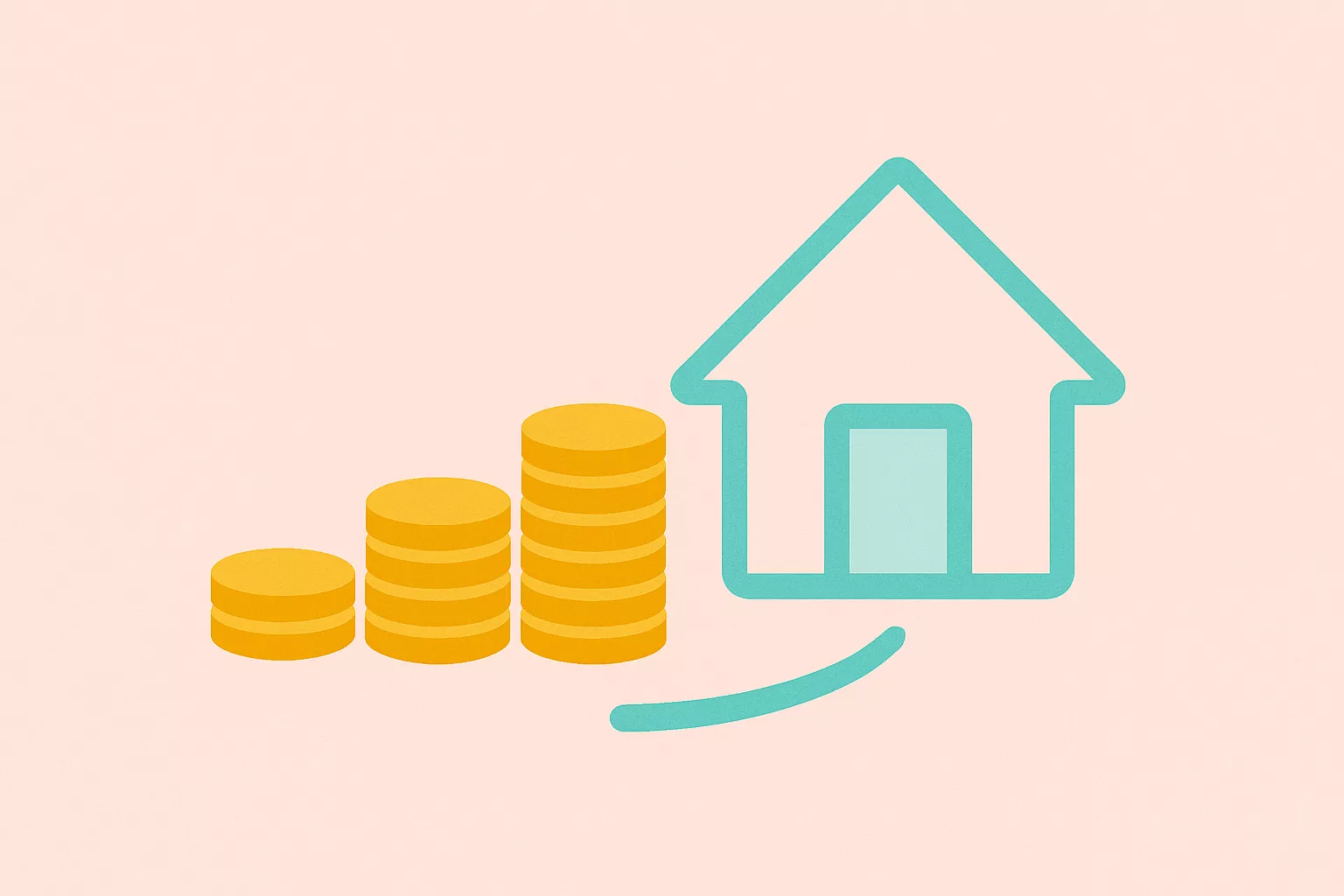Starting your own preschool or daycare is both a calling and a business decision. Once you’ve clarified your vision, explored licensing requirements, and started looking for a property, the next big question naturally follows:
How much does it cost to open a daycare? And where will the money come from?
The short answer is that it depends. Your total investment will vary based on your location, building type, and how big you plan to start. But with a clear plan and realistic priorities, it’s absolutely possible to launch a thriving preschool without overextending yourself.
In this guide, I’ll break down every part of the financial journey so it’s easier to plan with confidence. You’ll learn how to define your vision and scale, estimate real startup and monthly costs, understand what affects profitability, and explore practical funding options. Each section builds on the last so you can see the complete picture from your first budget draft to your first day of school.
All cost estimates and examples in this article are based on the United States, but many of the principles can guide you no matter where you’re starting your preschool.
Step 1: Clarify Your Vision and Scale
Your educational vision directly shapes your preschool startup costs. Before you dive into numbers, take a moment to picture what kind of program you want to create.
Ask yourself:
- Are you starting a home-based daycare with 10–20 children?
- A single classroom for toddlers and preschoolers with 30–40 children?
- A complete early-childhood program with 3–6 classrooms?
- A larger school that will eventually extend through elementary?
Each decision adds layers of cost. A single classroom will need fewer materials, teachers, and less space than a multi-classroom center. The larger your scale, the higher your startup and monthly costs will be.
For most first-time founders, it’s wiser to start small and expand later. Many successful programs begin with two or three classrooms serving around 50–75 children. At that scale, your tuition income can typically cover the salaries of a director, teachers, and basic operations while still leaving a modest daycare profit margin.
Step 2: Understand Your Preschool or Daycare Startup Costs
Once you have your vision in mind, you can start to estimate what it will take to open your doors. It helps to group your expenses into three main categories:
A. Pre-Opening Costs
These are the costs you’ll face before your first student ever arrives. They include:
- Business formation, permits, and legal fees
- Licensing applications and inspections
- Architect or design plans, if your space needs modifications
- Branding, logo, and website setup
- Marketing and enrollment materials
- Deposits for rent, insurance, and utilities
Depending on how much professional help you hire, pre-opening costs can range between $25,000–$75,000.
B. Facility and Equipment Costs
This is where most of your budget will go. The total depends on your region, the building’s condition, and whether you lease or build from scratch.
If your school includes three classrooms across roughly 3,000–4,000 square feet, plan for about $300,000–$600,000 in renovation and setup costs.
C. Working Capital
Even after you open, it takes time for enrollment and tuition to stabilize. Working capital covers the first few months of daily operations, including:
- Payroll and benefits
- Utilities and maintenance
- Food service, supplies, and consumables
- Loan or rent payments
- Marketing and admissions activities
A comfortable buffer is three to six months of operating expenses. For a center serving 75–100 children, this often means $100,000–$250,000 in working capital reserves.
Step 3: Create a Financial Plan for Your Daycare
Before spending a single dollar, take time to build a clear financial model. This plan becomes the foundation for every decision you’ll make at your daycare center.
A complete daycare financial plan should include:
- Startup cost summary: All your one-time expenses, such as renovation, licensing, materials, and setup.
- Monthly operating budget: Ongoing costs like staffing, rent, food, marketing, and insurance.
- Projected tuition revenue: Based on your school’s capacity, tuition rates, and expected enrollment ramp-up.
- Cash flow forecast: A 24–36 month view of when money will come in and go out.
- Break-even analysis: The number of children you need to enroll to cover your monthly expenses.
Step 4: How Much Does It Cost to Start a Daycare?
Here’s a look at what startup costs might realistically look like in the US. These numbers include furniture, materials, and some working capital, but not the purchase of land.
These figures might seem high at first glance, but they represent everything needed to open confidently and stay operational. When planned carefully, most programs begin to reach break-even enrollment within their first year.
Step 5: Funding Options for Your Preschool or Daycare
Starting a preschool often means combining several funding sources. Here are the most common ones and what to keep in mind for each.
1. Personal Savings or Home Equity
Many founders use personal resources like savings, home equity, or retirement funds. This approach offers complete freedom over your vision without the pressure of investors or interest. However, only invest what you can afford to lose, treating it as seed money rather than a safety net. Always consult a financial advisor first.
2. Bank or SBA Loans
The US Small Business Administration (SBA) offers microloans (up to $50,000) and 7(a) loans (up to $5 million) for childcare businesses.
To qualify, you’ll need:
- A detailed daycare business plan with three-year financial projections
- Good credit and some collateral
- Documentation of your management or childcare experience
3. Private Investors or Partners
Some founders partner with a silent investor, such as a family member or local businessperson who believes in their mission. While this can ease early financial pressure, it requires a carefully drafted agreement to define the terms of the partnership.
4. Community Grants and Local Programs
Explore:
- Local economic development funds (especially if revitalizing underused property)
- Nonprofit or faith-based grants
- State workforce or early education incentive programs
- The Montessori Foundation offers guidance on securing philanthropic support, including how to approach donors and fund specific initiatives like scholarships or facility upgrades.
Many states provide grants for new centers in areas with limited childcare options.
5. Tuition Prepayment or Founding Family Deposits
If you have committed early families, use pre-enrollment deposits or founding family pledges to fund initial expenses. Always manage these funds with transparent accounting.
Step 6: Balance Quality and Cost
Starting small doesn’t mean cutting corners. It simply means prioritizing what matters most — a safe, nurturing environment led by skilled teachers.
Here’s where to focus your early investments:
- Invest first in trained teachers and a beautiful, complete environment.
- Buy high-quality Montessori materials gradually but intentionally.
- Delay non-essential extras, such as large administrative offices or fancy playground equipment, until you’re stable.
Children thrive far more in a simple, loving classroom with great teachers than in an expensive building that’s struggling to stay afloat.
Step 7: Set Sustainable Tuition and Long-Term Goals
Your tuition model is the heart of your preschool’s financial sustainability. Setting rates too low may fill seats, but it can quickly lead to burnout and financial stress.
To create a tuition structure that works long-term:
- Research local competition. Compare rates across Montessori, play-based, and traditional programs.
- Price for value, not volume. Parents are willing to pay for reliability, safety, and high-quality care.
- Plan small, regular tuition increases. Adjust for inflation and cost-of-living each year instead of large hikes later.
- Include financial aid or scholarships only if they fit your mission and are built into your budget.
- Create a reserve fund. Save a portion of your profits for maintenance, upgrades, and future growth.
A thoughtful tuition strategy allows your preschool to stay financially healthy while continuing to serve families with care and consistency.
Step 8: Plan a Realistic Timeline
A strong preschool doesn’t appear overnight. From the first idea to welcoming your first child, expect the process to take 9 to 18 months. Careful pacing gives you time to meet licensing requirements, plan finances, and design your space properly.
Here’s a sample timeline you can follow:
The more time you invest in planning, the smoother your opening will be. Rushing through site selection or licensing can lead to costly mistakes later.
Step 9: Common Financial Mistakes to Avoid
Every new preschool owner makes adjustments in the first year. Here are common pitfalls to watch for and how to avoid them.
Careful financial planning protects your mission. A preschool built on sound numbers stays steady even through challenges.
Final Thoughts

Starting a preschool is a big and meaningful project. It takes patience, planning, and courage. But it can also bring you deep satisfaction and a stable business.
Let's quickly recap the main steps to get you there:
- Clarify the vision and scale of your center
- Understand your starting costs across three categories:
- Pre-opening costs
- Facility and equipment costs
- Working capital
- Make a financial plan. Use the cost breakdowns to build a realistic budget
- Take a look at realistic costs to build a center of the size you want
- Explore various funding options and choose what suits you best
- Invest in great teachers and equipments to ensure a nurturing environment
- Set sustainable tuition rates and goals
- Plan a realistic timeline to stay on track and avoid overwhelm
- And of course, make sure to avoid common financial pitfalls
By following these steps, you can build a preschool that is not just a dream, but a thriving and trusted part of your community for years to come.









.webp)